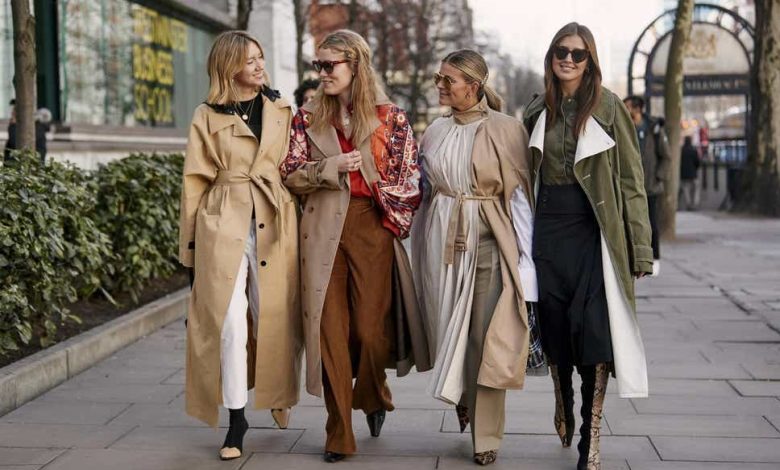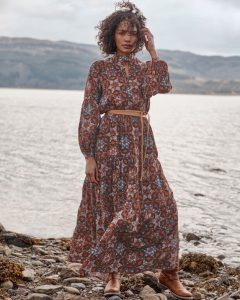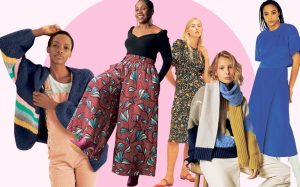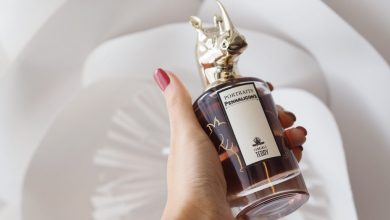
Introduction
Welcome to our blog, where we celebrate the power and significance of women’s clothing in society! From ancient times to the modern era, clothing has played a multifaceted role in shaping women’s lives. It goes far beyond mere fabric and stitching – it is a form of self-expression, a tool for empowerment, and an instrument of social change.
In this article, we will delve into the captivating world of women’s clothing and explore its various dimensions. Join us as we unravel how fashion choices can reflect identity, influence perception, empower individuals, contribute to social movements, impact the workplace environment, and even affect overall well-being.
So grab your favorite cup of tea or coffee as we embark on this exciting journey through the realm of women’s clothing. Let’s dive right in!
The multifaceted significance of women’s clothing
Women’s clothing plays a multifaceted role in society, encompassing aspects of identity, self-expression, perception, empowerment, social movements, the workplace, and even well-being. It goes beyond mere fabric and design to become a powerful tool for women to communicate who they are and what they stand for.
Clothing serves as a reflection of one’s identity. The way we dress can convey our values, beliefs, and personality. Whether it’s through bold colors or subtle details, women have the ability to express their individuality through fashion choices. From traditional attire that honors cultural heritage to avant-garde styles that challenge societal norms – every outfit tells a story.
Moreover, women’s clothing greatly influences how others perceive them. First impressions are often formed based on appearance alone. This means that what we choose to wear has an immediate impact on how people judge us. A polished business suit may project professionalism and competence while casual attire might suggest approachability and ease.
Fashion also holds the power to empower women by giving them confidence and agency over their bodies. When you feel good about what you’re wearing, it can positively affect your self-esteem and radiate into other areas of life. By embracing personal style and experimenting with different looks, women can assert themselves in a world where expectations often try to confine them.
Throughout history, clothing has been intertwined with social movements as well. Women have used fashion as a statement of resistance or solidarity during times of political change or feminist activism. Think back to suffragettes donning white garments or modern-day feminists reclaiming symbols like pink pussy hats – clothes have always played a role in pushing boundaries and advocating for equality.
In the workplace too, women’s clothing carries significance beyond just being presentable; it can influence perceptions of professionalism or authority levels. While there may still be biases towards certain types of attire for men versus women in professional settings – such as suits versus skirts – many workplaces today embrace diverse styles that allow women to express themselves while maintaining a sense of professionalism.

Clothing as a Reflection of Identity
Clothing plays a significant role in expressing one’s identity. It is not merely about covering our bodies; it goes beyond that. Our fashion choices reflect who we are and how we want to present ourselves to the world.
Each person has their unique style, whether it be bold and edgy or elegant and sophisticated. The clothes we wear can convey our personality traits, interests, and even values. For example, someone wearing bohemian attire may be seen as free-spirited and artistic, while someone in a tailored suit exudes professionalism and ambition.
Fashion allows us to showcase our individuality by selecting garments that resonate with us personally. It gives us the freedom to experiment with different styles, colors, patterns, and accessories until we find what truly represents us.
Moreover, clothing also holds cultural significance as it reflects one’s heritage or community affiliation. Traditional clothing often tells stories of history and tradition passed down through generations. Wearing these garments can serve as a form of connection to one’s roots.
In addition to expressing personal identity, clothing can also influence how others perceive us. People make snap judgments based on appearances, including the way we dress. Whether consciously or unconsciously, individuals form impressions about another person based on their attire alone.
For instance, dressing professionally for a job interview sends a message of competence and reliability while wearing casual attire might give off an impression of being laid-back or less serious.
It is important to note that these perceptions may not always align with reality since they are based solely on visual cues rather than getting to know someone on a deeper level.

Self-expression through fashion choices
Self-expression through fashion choices is a powerful tool that allows women to communicate their individuality and personality. What we choose to wear can speak volumes about who we are and how we want to be perceived by others. It is an outward manifestation of our inner thoughts, feelings, and values.
Fashion gives us the freedom to experiment with different styles, colors, patterns, and textures. Whether it’s a bold statement piece or a subtle accessory, each choice contributes to creating our unique fashion identity. Some days we may feel like embracing vibrant prints and daring cuts, while on other days we may opt for more classic and sophisticated attire.
The beauty of self-expression through fashion lies in its ability to transcend societal norms and expectations. It allows women to break free from stereotypes and express themselves authentically. By choosing what feels right for them personally instead of conforming to societal standards, women can project confidence and empower themselves.
Fashion has always been closely intertwined with social movements throughout history. From suffragettes wearing white as a symbol of purity during the fight for women’s rights, to the punk movement challenging conventional beauty standards in the 1970s – clothing has played a significant role in amplifying messages of change.
In today’s world where workplace dress codes are becoming more relaxed and flexible, professional attire no longer solely consists of structured suits or conservative dresses. Women have greater freedom than ever before when it comes to expressing their personal style within professional settings while still maintaining professionalism.
It’s important not only for society but also for our own well-being that we’re able to express ourselves freely through our clothing choices without judgment or limitation. The clothes we wear can have a profound impact on our mood, confidence levels, and overall sense of self-worth.
In conclusion (without using those specific words), self-expression through fashion choices empowers women by allowing them creative control over how they present themselves to the world. Our wardrobe becomes an extension of ourselves, a tool to communicate our unique identities and make a statement.

The Influence of Women’s Clothing on Perception
Women’s clothing plays a significant role in how we perceive others and how others perceive us. The way we dress sends out signals about our personality, style, and even our social status. But beyond these superficial impressions, the influence of women’s clothing on perception goes much deeper.
When we meet someone for the first time, their attire is often one of the first things that catch our attention. It becomes an instant indicator of their taste, confidence, and professionalism. Whether it’s a formal suit or a casual outfit, clothing choices can shape initial perceptions in powerful ways.
Moreover, women have long used fashion as a tool for self-expression. By carefully selecting their attire, they convey their identity to the world without uttering a single word. Bold patterns may signify creativity and individuality while conservative styles may suggest elegance and sophistication.
It is important to recognize that societal norms heavily influence how women choose to dress themselves. Women who adhere to traditional gender roles may opt for more feminine styles whereas those who challenge these norms may embrace more unconventional looks.
In recent years, there has been an increasing emphasis on using fashion as a source of empowerment for women. Clothing can be seen as armor – something that boosts confidence and helps individuals feel comfortable in their own skin.
Fashion also intersects with social movements by creating platforms for activism through clothing choices. For instance, wearing t-shirts with slogans related to feminist causes or supporting sustainable fashion brands are subtle yet powerful ways for women to make statements about their beliefs.
In professional settings specifically, women’s clothing has historically been scrutinized more than men’s attire when it comes to judgments about competence and credibility. This double standard puts pressure on female professionals to carefully curate outfits that project authority while still adhering to societal expectations.

The impact of attire on first impressions
When it comes to making a first impression, clothing plays a significant role. We often form initial opinions about someone based on their attire before they even say a word. The impact of attire on first impressions cannot be underestimated.
Our choice of clothing sends subtle signals about our personality, style, and taste. It can convey professionalism or casualness, confidence or insecurity. For example, wearing a well-fitted suit can project authority and competence in the workplace, while opting for more relaxed and colorful outfits may suggest creativity and approachability.
Additionally, the appropriateness of clothing for specific situations is crucial in shaping how others perceive us. Wearing formal attire to a job interview shows respect for the occasion and conveys seriousness about the position. On the other hand, showing up in overly casual clothing might give off an impression of carelessness or lack of professionalism.
It’s essential to consider cultural norms when dressing for certain events or occasions as well. Different cultures have different expectations when it comes to appropriate dress codes. Failing to adhere to these expectations can result in misunderstandings or negative judgments being made.
Furthermore, personal grooming also contributes significantly to first impressions alongside clothing choices. Attention to detail such as clean shoes, neatly styled hair, and minimal wrinkles can enhance one’s overall appearance and leave a positive impact on those we encounter.
In conclusion (not conclusive), understanding the impact that attire has on first impressions is crucial in navigating social interactions effectively. By paying attention to our choices in clothing and presenting ourselves appropriately for different circumstances with consideration towards cultural norms – we not only create favorable initial perceptions but also demonstrate respect for ourselves and those around us!

Women’s Clothing and Empowerment
Fashion has always been a powerful tool for self-expression, and women have long used their clothing choices to assert their individuality and empower themselves. Whether it’s choosing a bold outfit that exudes confidence or donning a professional suit that commands respect, what we wear can have a profound impact on how we feel and how others perceive us.
For many women, fashion is about more than just looking good; it’s about feeling good. When we put on an outfit that makes us feel strong and confident, it can give us the boost of empowerment we need to take on the world. It becomes our armor, our way of saying “I am here, I matter.”
In today’s society, where women are still fighting for equality in various aspects of life, clothing choices have become even more significant. Many designers are now creating pieces specifically designed to celebrate female strength and inspire empowerment. From slogan tees advocating for gender equality to tailored suits designed with women in mind, fashion has become a catalyst for change.
It is not just about wearing what is trendy or fashionable; it is about embracing one’s authentic self through personal style choices — whether that means rocking bright colors or embracing minimalist aesthetics. The power lies in owning your uniqueness unapologetically.
Empowerment also extends beyond personal expression; it encompasses economic empowerment as well. As more women enter positions traditionally dominated by men in the workplace, attire plays an important role in breaking down barriers and challenging stereotypes.
By dressing professionally yet stylishly, women can make their mark while still maintaining their identity within male-dominated industries. This sends a clear message: they belong, they are competent, and they demand to be taken seriously.

Fashion as a source of empowerment
Fashion has long been regarded as a form of self-expression, allowing individuals to showcase their unique style and personality. But beyond its aesthetic appeal, fashion holds the power to empower women in numerous ways.
For many women, fashion serves as a source of empowerment by giving them the confidence to embrace their true selves. The right outfit can make a woman feel like she can conquer the world, boosting her self-esteem and enabling her to take on any challenge that comes her way.
Fashion also enables women to break free from societal norms and expectations. It allows them to defy stereotypes and express themselves authentically, without fear of judgment or criticism. Whether it’s through bold colors, unconventional silhouettes, or daring accessories, fashion empowers women to be unapologetically themselves.
Moreover, fashion has played an integral role in various social movements throughout history. From suffragettes wearing white attire as a symbol of unity during the fight for women’s rights to feminists reclaiming traditionally masculine styles such as pantsuits, clothing has been used as a tool for activism and political expression.
In recent years, there has been a rise in inclusive fashion brands that cater specifically to diverse body types and identities. This shift towards inclusivity is not only empowering but also sends a powerful message: every woman deserves representation and recognition.
By embracing their personal style through fashion choices, women are able to celebrate their individuality while contributing positively to society’s perception of what it means to be empowered. Fashion truly holds transformative potential when it comes to empowering women – one outfit at a time!
Clothing and Social Movements
In the ever-evolving landscape of society, clothing has played a significant role in driving social change and movements. From suffragettes donning white dresses to symbolize their fight for women’s rights to activists wearing t-shirts emblazoned with powerful slogans, fashion has become a tool for expressing solidarity and advocating for important causes.
Throughout history, various social movements have harnessed the power of clothing to make bold statements. The Civil Rights Movement in the United States saw African Americans using their attire as a means of asserting their identity and challenging racial discrimination. The Black Panthers adopted black leather jackets as a symbol of resistance against systemic oppression.
In recent years, we have witnessed an upsurge in feminist activism through clothing choices. Women proudly wear “Nevertheless She Persisted” shirts or pussy hats at rallies, showcasing their determination to shatter glass ceilings and fight gender inequality.
By using clothing as a medium for expression, these social movements challenge societal norms and push boundaries. They create spaces where individuals can unite behind common goals while embracing diversity.
Fashion brands themselves have recognized the influence they hold within these movements by creating collections that support causes such as environmental sustainability or body positivity. By aligning themselves with specific values, they empower consumers to make conscious choices about what they wear.
While some may argue that clothes alone cannot bring about lasting change, it is undeniable that they play an integral role in amplifying voices and sparking conversations surrounding crucial issues. Clothing serves as a visual representation of our beliefs – it allows us to communicate without words and connect with others who share similar passions.
As society evolves further still, we can expect clothing to continue shaping social narratives by pushing boundaries even further than before – chipping away at stereotypes and embracing the diversity that makes our world so rich.

Women’s Clothing in the Workplace
In today’s society, women’s clothing plays a significant role in the workplace. The way women dress can convey professionalism, confidence, and personal style. Whether it’s a tailored suit or a chic dress, what we wear to work can greatly impact how we are perceived by others.
Clothing choices in the workplace often reflect societal norms and expectations. While some industries have more relaxed dress codes, others require formal attire. Despite these variations, it is essential for women to feel comfortable and confident in their outfits.
The power of dressing well cannot be underestimated. When women look good, they feel good – this boosts their self-esteem and overall performance at work. It allows them to project an image of competence and professionalism that can open doors for opportunities.
Additionally, fashion trends have evolved over time to embrace diversity and inclusivity. Women now have more freedom than ever before when it comes to expressing themselves through their clothing choices at work. They can showcase their unique personality while still adhering to appropriate professional standards.
Moreover, clothing has become an important tool for breaking gender stereotypes in the workplace. By choosing stylish yet functional pieces that defy traditional gender roles, women are challenging societal expectations and paving the way for change.

Clothing and Well-being
Clothing and well-being go hand in hand, as our choice of attire can have a significant impact on our mood and overall sense of self. When we dress in comfortable and flattering clothes, it can boost our confidence and make us feel good about ourselves.
Comfort is key when it comes to clothing and well-being. Wearing restrictive or ill-fitting garments can cause discomfort throughout the day, leading to irritability and a decline in productivity. On the other hand, choosing outfits that allow for ease of movement can promote a sense of freedom and positivity.
Functionality is another important aspect to consider. Clothing that meets our practical needs not only enhances our daily activities but also contributes to our mental well-being. Whether it’s having pockets for convenience or wearing weather-appropriate attire, functional clothing allows us to navigate through life with ease.
Physical well-being is also influenced by our choice of clothing. The materials we wear against our skin can affect comfort levels as well as skin health. Opting for breathable fabrics like cotton or linen can help regulate body temperature, preventing overheating or excessive sweating.
Taking care in selecting clothing that prioritizes comfort, functionality, and physical well-being plays an integral role in enhancing overall wellness. By consciously choosing clothes that align with these factors, we create an environment where positive emotions thrive and contribute positively towards both mental and physical health.
The connection between clothing and mood
We’ve all experienced those days when we put on our favorite outfit and instantly feel more confident, happy, or even powerful. It’s no secret that what we wear can have a profound impact on our mood. But why is this connection between clothing and mood so strong?
One reason could be that the clothes we choose to wear reflect how we see ourselves. When we dress in a way that aligns with our personal style and makes us feel good, it boosts our self-esteem and overall mood. On the other hand, wearing something that doesn’t resonate with us can leave us feeling uncomfortable or out of place.
Additionally, certain colors can evoke specific emotions. For example, vibrant hues like red or yellow are often associated with energy and positivity, while softer shades like pastel blues or pinks can create a sense of calmness or tranquility.
Furthermore, the comfort level of our clothing plays a significant role in affecting our mood throughout the day. Wearing tight-fitting or restrictive garments may cause physical discomfort which can lead to irritability or frustration.
In recent years, there has been an increasing focus on “athleisure” fashion – clothing designed for both style and functionality – which emphasizes the importance of comfortable attire in promoting well-being.
Understanding the connection between clothing and mood allows us to make intentional choices about what we wear each day. By selecting outfits that make us feel confident, comfortable, and aligned with who we are as individuals; we have the power to positively influence not only our own moods but also how others perceive us. So next time you choose your outfit for the day ahead – consider how it might impact your mood!

Comfort, functionality, and physical well-being
Clothing plays a significant role in our everyday lives, not only as a form of self-expression but also in terms of comfort, functionality, and physical well-being. When it comes to women’s clothing, these aspects become even more crucial.
Comfort is key when choosing what to wear. Women deserve to feel at ease in their clothes throughout the day. Whether it’s the softness of fabric against their skin or the perfect fit that allows for easy movement, comfort should never be compromised.
Functionality is another important factor to consider. Women lead busy lives and need clothing that can keep up with them. From pockets that actually hold items (yes, we’re looking at you, fake pockets) to adjustable straps on dresses or tops that allow for a customizable fit – practicality matters!
Physical well-being is often overlooked when it comes to clothing choices but it shouldn’t be ignored. Wearing ill-fitting or restrictive clothing can have negative effects on posture and overall health. It’s important for women to choose garments that promote good circulation and provide support where needed.
By prioritizing comfort, functionality, and physical well-being in our wardrobe choices, women can feel confident and empowered throughout their day. So next time you’re shopping for new pieces or putting together an outfit from your closet, remember these factors – because style isn’t just about looking good; it’s about feeling good too!
Conclusion
Women’s clothing plays a significant role in society, serving as more than just mere fabric and accessories. It is a powerful tool for self-expression, influencing perception, promoting empowerment, reflecting social movements, and even impacting well-being.
Through their fashion choices, women can communicate their identity and showcase their unique personality. Whether it be through bold patterns or subtle elegance, clothing allows individuals to express themselves creatively.
Furthermore, the clothes we wear have the ability to shape how others perceive us. First impressions are often formed based on attire alone. Therefore, women can use this knowledge to make a statement or challenge stereotypes by dressing according to their own standards rather than societal expectations.
Fashion has also proven itself as a source of empowerment for countless women. Through style experimentation or embracing cultural garments with pride, clothing gives women the confidence and agency they need to navigate various aspects of life.
Moreover, women’s clothing has played an influential role in social movements throughout history. From suffragettes wearing white dresses during protests to activists donning t-shirts with empowering slogans today – fashion has become intertwined with advocacy and change-making efforts.
In the workplace too, what we wear matters. Professional attire not only helps create credibility but also signals competence and authority. By breaking away from traditional gender norms in workwear choices such as power suits instead of skirtsuits – women challenge existing biases while striving for equality in professional settings.
Lastly but certainly not least important is the connection between clothing and well-being. The clothes we choose impact our mood and overall sense of comfort throughout the day. When we feel good about what we’re wearing – whether it’s soft fabrics against our skin or functional designs that allow freedom of movement – our physical well-being is positively affected.
In conclusion (without using those exact words!), there is no denying that women’s clothing holds immense significance within society – from its ability to reflect identities and influence perceptions to empowering individuals and shaping social movements; all while impacting well-being and self-confidence. It is a powerful tool that should be celebrated.





